Traditional Lancashire hotpot is the ultimate comfort food. Slow-cooked, oven-baked layers of succulent lamb, potatoes and onions, covered with a crispy potato topping. This lamb hotpot is one of my favourite casseroles.
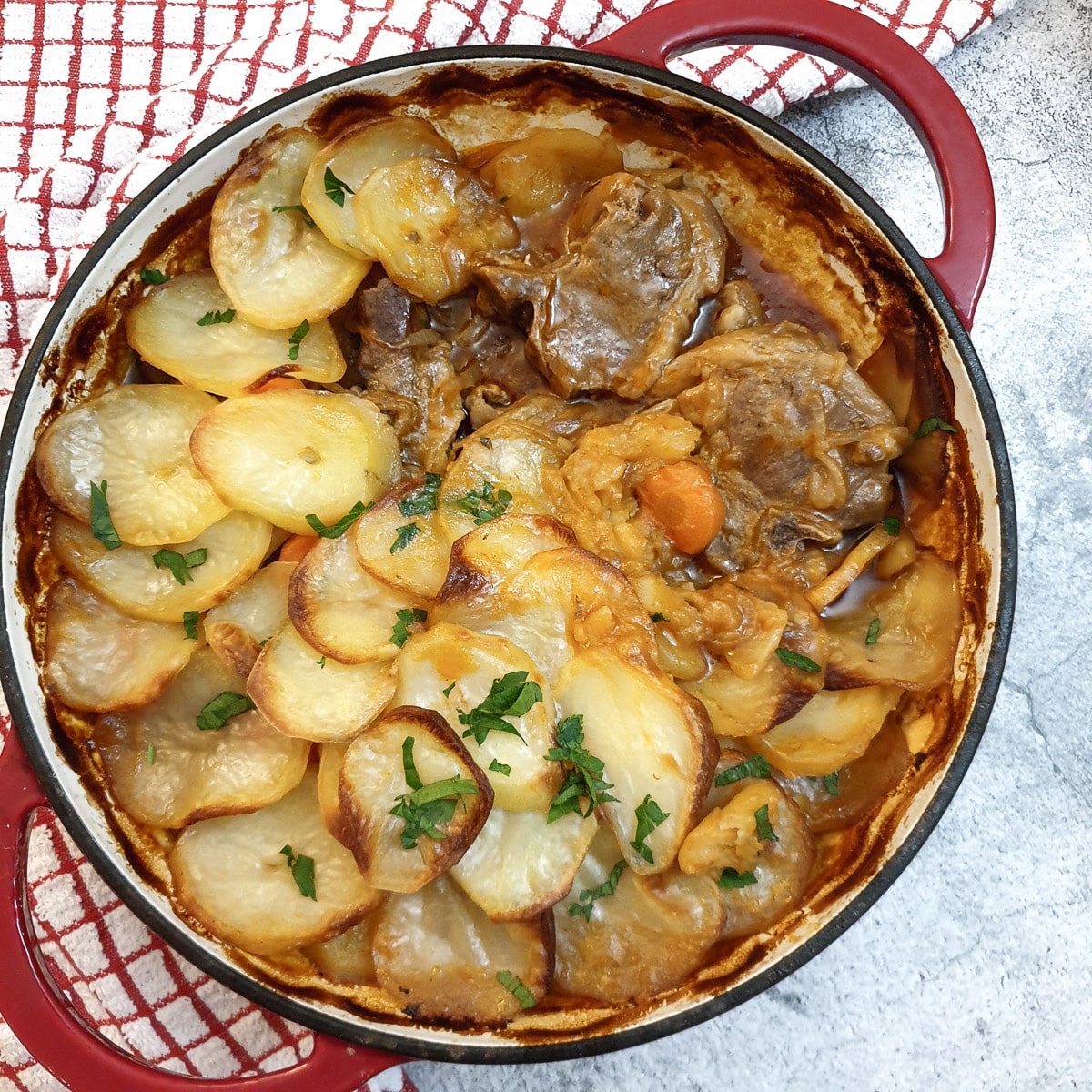
Jump to:
Origins of Lancashire hotpot
There is a good reason why some dishes stand the test of time. It's because they taste so good. And Lancashire hotpot (or lamb hotpot) is one of those dishes. Originating in the north-west of England, over 200 years ago, this traditional lamb casserole has been cooked in countless English kitchens over the years. It stands alongside Yorkshire meat and potato pie, Toad-in-the-hole and Cottage Pie as an example of the finest British homely cooking.
Unless you have tasted a Lancashire hotpot, you will find it hard to believe that such a delicious dish can come from so few ingredients. But believe me, it's true. There are no fancy herbs and spices in this dish, just plain wholesome cooking at its finest.
Earliest form of slow cooker
A Lancashire hotpot was probably the forerunner of one-pot meals and the earliest form of the slow cooker. During the Industrial Revolution, more and more women began working in the woollen mills. They needed an easy way to feed their family and they would take the prepared dish to the local baker on their way to work. He would put it in his oven (not every home had an oven in those days) and the women would pick it up again on their way home, wrapped in a blanket to keep it warm. Hence the term hotpot.
Another theory is that the dish was a 'hodge-podge' of ingredients, and over the years the term evolved to become hotpot.
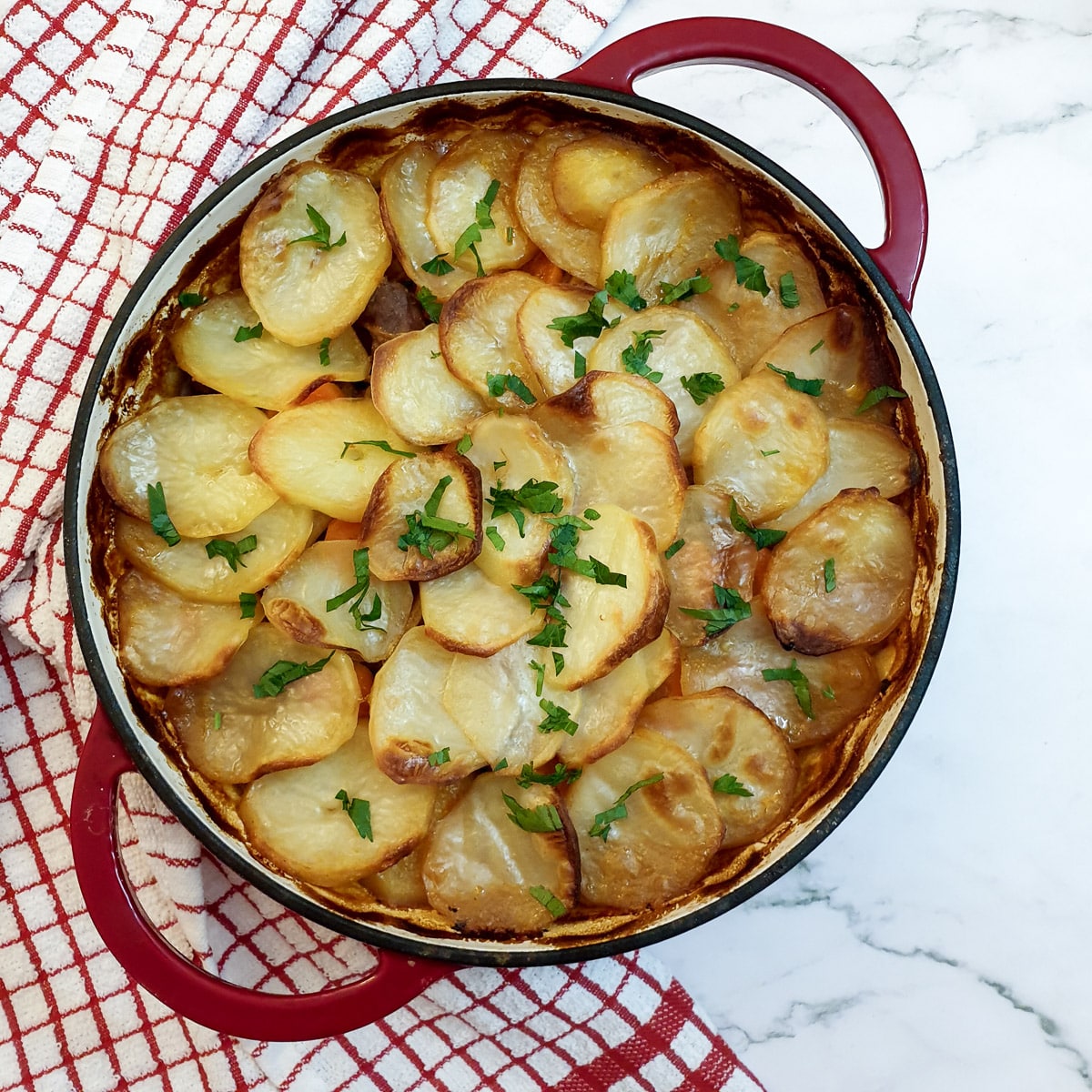
What goes into a Lancashire hotpot?
A traditional Lancashire hotpot contains layers of lamb, potatoes, carrots and onions baked in a casserole dish. It is covered with seasoned stock before a final layer of potatoes is placed on top. The casserole is covered with a lid and placed in a medium oven to slow-cook for about 90 minutes before the lid is removed for the final 15 minutes. The juices from the lamb and stock soak into the underside of the potatoes, leaving them soft and creamy, while the top of the potatoes is crispy and golden.
Traditionally, Lancashire hotpot also contained lamb kidneys and oysters, but this is a matter of taste. Back in the day, oysters were a cheap way of bulking up meat, but as oysters became more popular and consequently more expensive, their use has died out.
This easy recipe requires no other embellishments. I can't think of anything nicer to come home to after a long day at the grindstone, than a piping hot dish of Lancashire hotpot. Just look at that succulent lamb underneath the creamy potatoes!
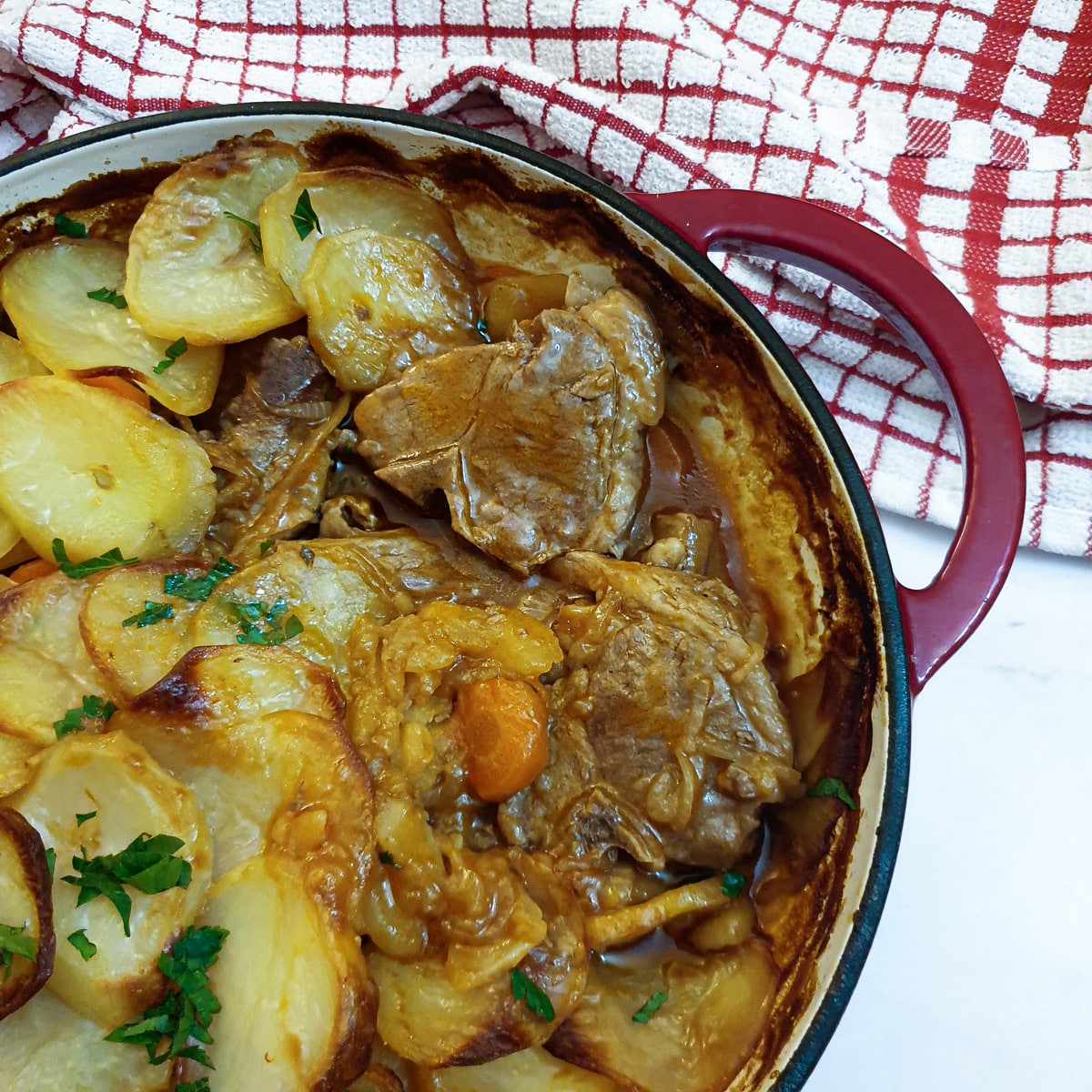
What you will need
Equipment
You will need a heavy casserole dish with a tightly fitting dish, such as a cast iron Dutch oven. What I like about a cast iron Dutch oven is the fact that the tightly fitting lid prevents liquid from evaporating during cooking, so your casseroles are practically guaranteed not to dry out.
You will also need a frying pan for browning the meat and a sharp knife and chopping board for preparing the vegetables.
Ingredients
**You can find the complete list of ingredients and full instructions for making this traditional Lancashire hotpot on the printable recipe card at the end of this post**
This recipe will easily feed 4 people.
Lancashire hotpot is a simple dish. You don't need many ingredients - lamb, potatoes, carrots and onions. And of course, you will need some stock and seasoning.
You don't need to be too precise with the measurements - ensure you have sufficient lamb for the number of people you will be serving and adjust the quantities for the potatoes and onions around this.

Lamb
Traditionally a hotpot was made with mutton, as this was a much cheaper cut than lamb. Nowadays, mutton is more difficult to get hold of, and it is more common to see lamb in a hotpot.
Lamb neck, shin or shoulder are the most commonly used cuts, as these benefit from the long, slow cooking time. That said, you can use the equivalent amount of your cut of choice. You can even make this with bone-in chump lamb chops.
If you enjoy lamb kidneys, by all means, add some. You will need one coarsely chopped kidney per person.
Lamb can be quite a fatty cut of meat, so I like to trim the visible fat off the meat before using it.
If you are using lamb which is still on the bone (ie chops or neck) you will need about 200g per person. If you are using boneless lamb (ie cubed from the shoulder) you will need about 150g per person.
Potatoes
You will need the same quantity of potatoes by weight as the lamb.
The potatoes have to be thinly sliced into approximately ½cm thick rounds. You could use a mandoline for this, or if you don't have one, a sharp knife will work just as well. Use nice big potatoes so that you get large slices - they are much easier to layer on top of the meat than small slices.
I find the best potatoes to use for a Lancashire hotpot are either King Edward or Maris Piper as they turn fluffy when cooked, and tend to absorb the flavours of the gravy better than a waxy potato.
Onions and carrots
You will need 1 large onion for every 450g (1 pound) of potatoes.
Slice the onion thinly as per the potatoes, using a mandoline or a sharp knife.
The carrots should be peeled and sliced into rounds. Allow one small to medium carrot per person (or about half a cup, sliced).
Other ingredients you will need
In addition to the main ingredients, you will need the following:
Lamb stock - If you don't have real lamb stock to hand you can make your own, using one stock cube per cup of boiling water. You will need sufficient stock to cover the meat and vegetables. If you can't get hold of a lamb stock cube, you can substitute this for a chicken or even vegetable stock cube.
Flour - To thicken the stock you will need 1 tablespoon of plain flour per cup of stock.
Worcestershire sauce and tomato paste - This is all you will need to add for extra flavour. You will need 2 tablespoons of Worcestershire sauce and 1 tablespoon of tomato paste per cup of stock. Make sure you use tomato paste, which is very highly concentrated - tomato ketchup won't give the same taste.
Sunflower oil - for browning the lamb before adding it to the hotpot. You can get away without browning the lamb, but this step does add extra flavour.
Salt and Pepper - This is for flavouring and is to your own taste. Each of the layers should be lightly seasoned with salt and pepper as the dish is assembled. This dish benefits from quite a lot of pepper.
Instructions
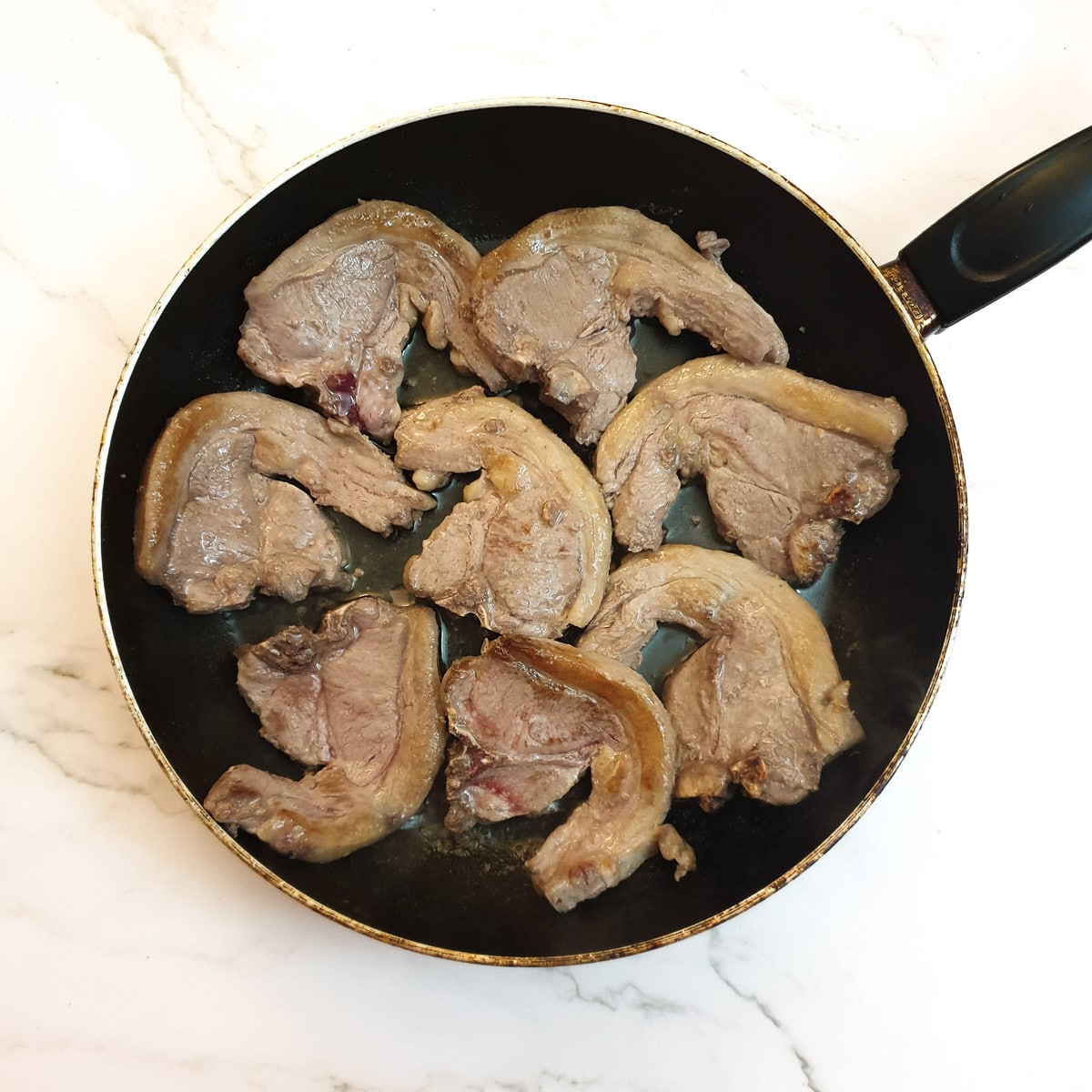
Heat the oil in a frying pan and brown the lamb on both sides.
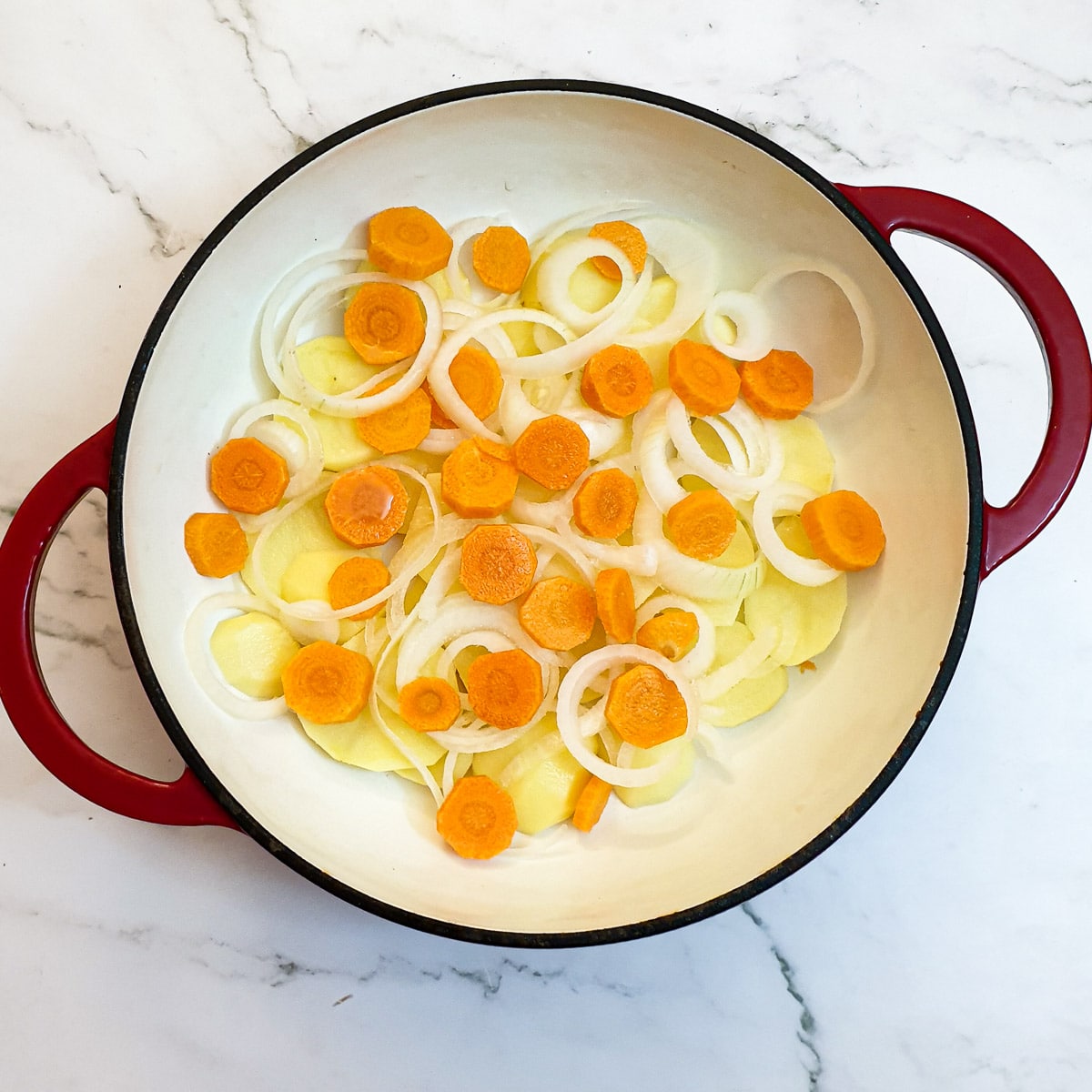
Arrange a layer of potatoes on the bottom of your casserole dish. This will prevent the meat from sticking to the dish.
Arrange half of the carrots and onions over the potatoes.
Season the layer of vegetables lightly with salt and pepper.
Be careful not to add too much salt at this stage. You have to season each layer as you assemble the dish so sprinkle lightly.
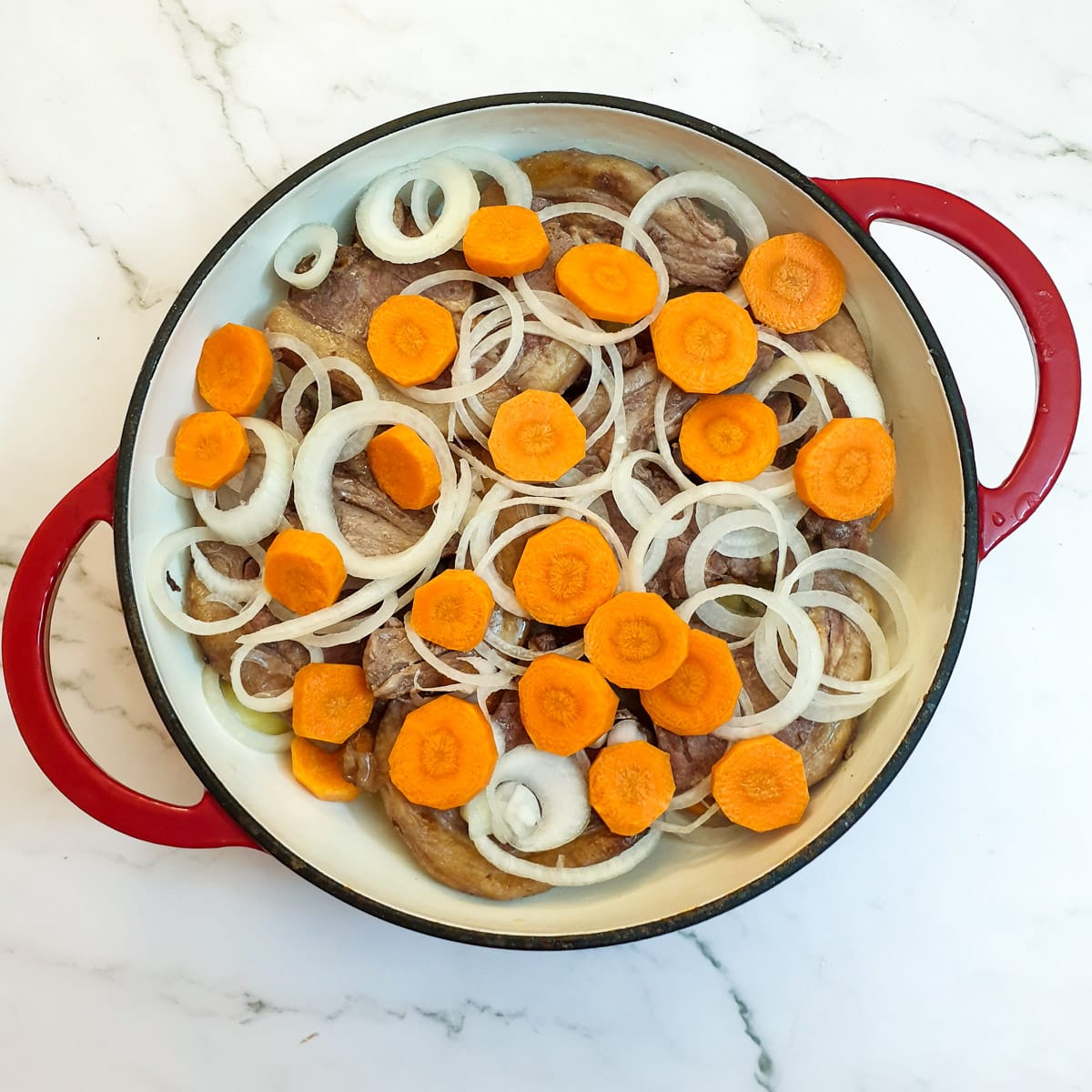
Arrange the browned lamb over the vegetables and then cover with the remaining onions and carrots.
Season this layer lightly with salt and pepper.
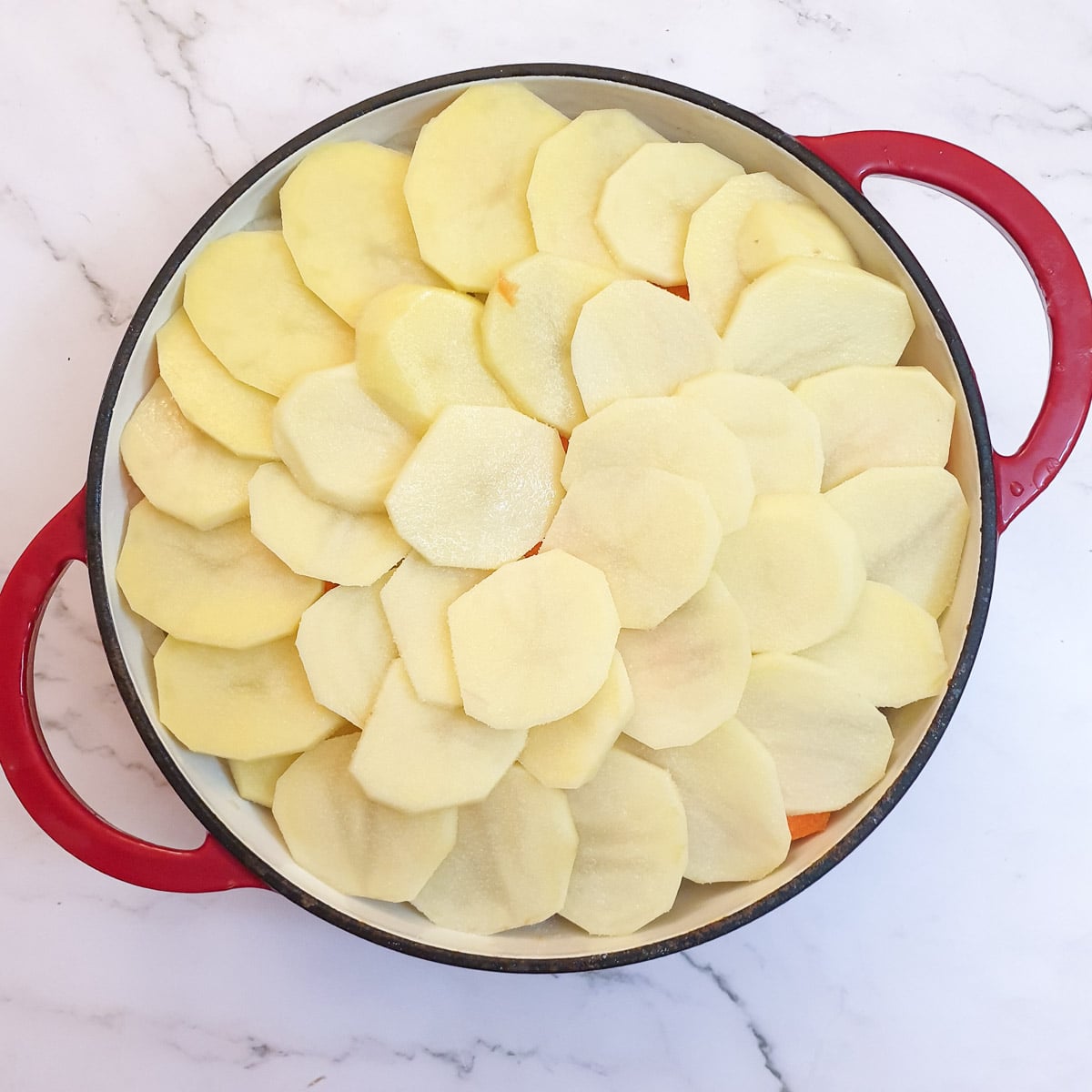
Mix the Worcestershire sauce, tomato paste and flour with the stock and pour it over the meat and vegetables.
Arrange a layer of potatoes on top. Let them overlap one another, a bit like scales on a fish.
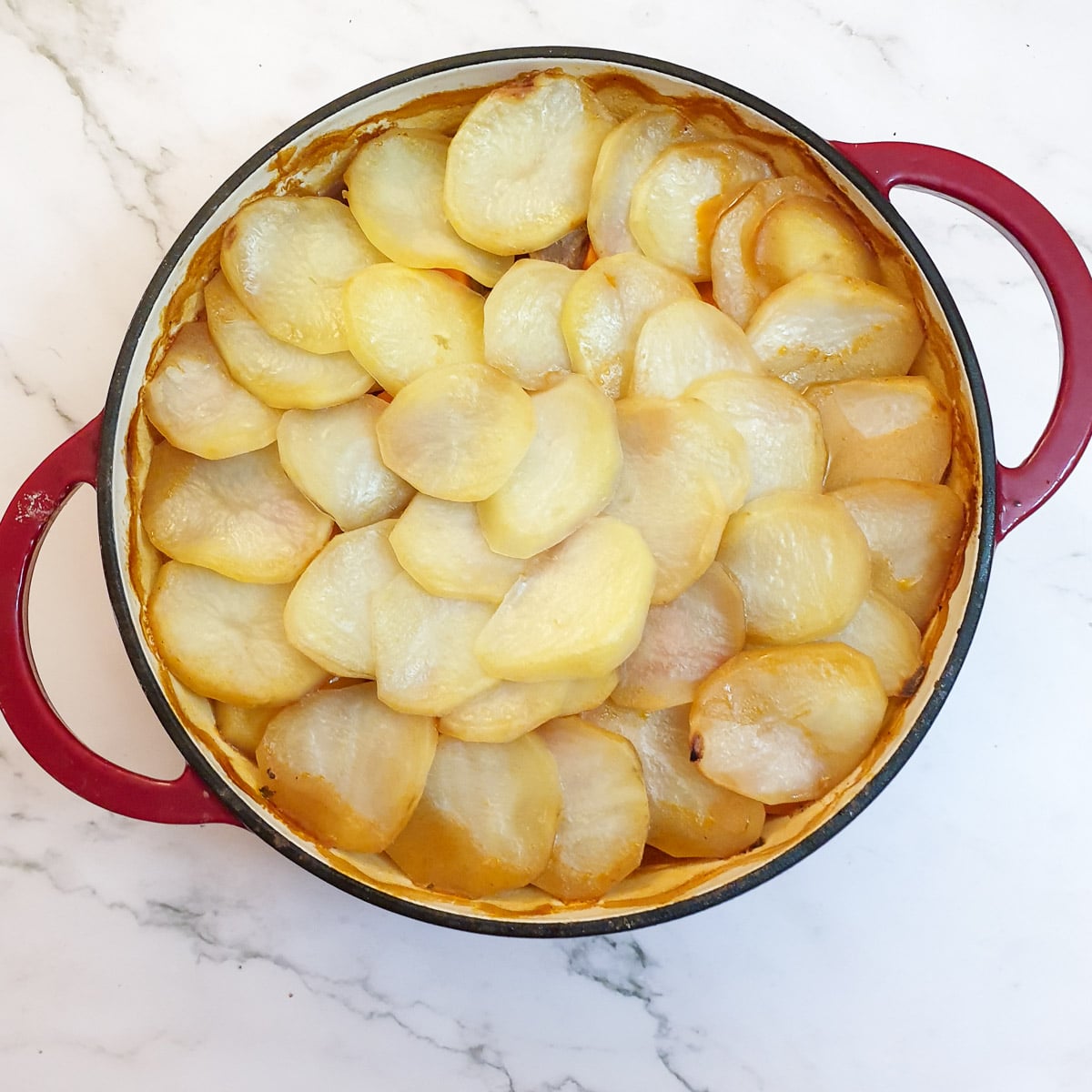
Cover the casserole dish with a lid and place it in a preheated oven (175C / 350F) for 90 minutes.
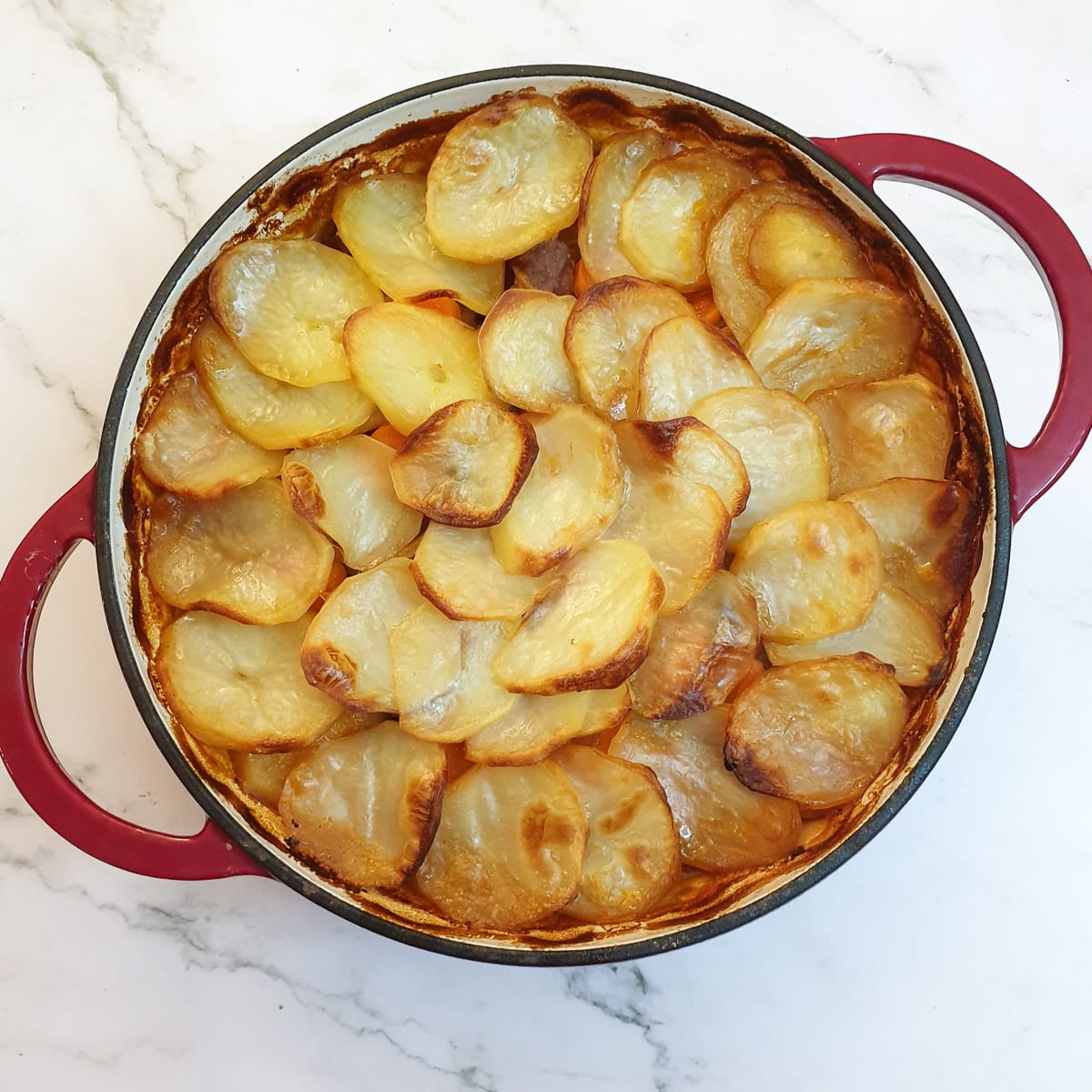
Remove the lid and leave the casserole in the oven for a further 10 to 15 minutes to brown and crisp the potatoes.
The timing depends on the cut of lamb you are using. To test that the lamb is tender enough, remove the casserole from the oven and take out a piece of lamb from beneath the potato. If it still seems a little tough, put the casserole back in the oven for a longer cooking time. The cut of lamb I used in this recipe was fall-apart tender after 90 minutes.
If you'd like to be notified of new recipes, why not subscribe to my newsletter? To say thank you, you will receive a free recipe e-book containing some of my most popular cakes and desserts.
Lancashire hotpot FAQ
I like to serve this dish with a side of vegetables. Peas go well, as do sweet potatoes or yams. A side helping of broccoli or brussels sprouts also makes a tasty accompaniment.
Yes, you can add additional vegetables to it. I wouldn't swap out the potatoes or onions as these are basic ingredients. But you could add slices of sweet potato, swedes and/or parsnips.
Some people like to add mushrooms. I think these would go very well, especially if you are including lamb kidneys.
Yes, you can use beef instead of lamb. Stewing beef is ideally suited to slow cooking so you can substitute stewing beef for lamb. Cooking times will remain the same.
Yes, you can do one of two things.
1. Assemble the dish, and pour over the stock. But do not add the potatoes to the top or you will find they turn black on standing. Cover with a lid and leave in the fridge for up to 3 days. When you are ready to make it, add the potato topping and bake in the oven as per the recipe.
2. Assemble the dish, pour over the stock and cover with the potatoes. Bake in the oven until the dish is cooked but omit the final step of browning the potatoes. Allow to cool, cover with a lid and leave in the fridge for up to 3 days. When you are ready to make it, place the uncovered dish in a hot oven until the dish is heated through and the potatoes are crisp and golden.
Lamb, potatoes and onions all freeze very well. Transfer any leftovers from the casserole dish into a plastic container and store them in the freezer for up to 4 months.
To use, defrost in the fridge and then reheat either in the microwave or in a saucepan on the stovetop.
You can also freeze the dish once you have cooked it (as far as point 2 in the above section "Can I make this dish in advance"). Just wrap the cooled dish in a layer of tinfoil, cover with clingfilm and freeze for up to 3 months.
When you are ready to use it, remove it from the freezer and allow it to defrost overnight in the fridge. Then place the defrosted, uncovered dish in a hot oven until the dish is heated through and the potatoes are crisp and golden.
Save for later
If you would like to make this Lancashire hotpot, why not save the recipe to one of your Pinterest boards so you can find it easily? Just click on the image below.
Alternatively, you can save the recipe by clicking on the floating heart icon on the right-hand side of the screen.
Related recipes
Visit my soups, stews and casserole recipes page for more winter warmers. Here are a few you might enjoy:
📋The recipe
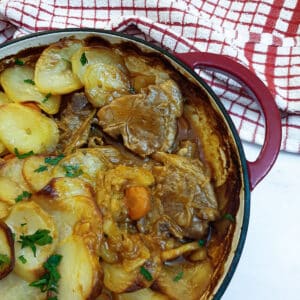
Traditional Lancashire Hotpot (lamb hotpot)
(Click the stars to rate this recipe)
Equipment
- Dutch oven
- Sharp knife or Mandoline
- Measuring jug
Ingredients
- 2 lb / 900 grams lamb
- 2 lb / 900 grams potatoes peeled and sliced
- 2 medium onions peeled and sliced
- 2 medium carrots peeled and cut into rings
- 2 cups lamb, beef or vegetable stock use 2 stock cubes dissolved in boiling water if you don't have fresh stock
- 2 tablespoons flour mixed with a little water
- 3 tablespoons Worcestershire sauce
- 2 tablespoons tomato paste
- 2 tablespoons sunflower (or other neutral flavoured oil)
- Salt and pepper to taste
Instructions
- Pre-heat the oven to 175°C/350°F
- Peel and slice the potatoes, carrots and onions2 lb / 900 grams potatoes, 2 medium onions, 2 medium carrots
- Place a layer of potatoes in a casserole dish and top with half the onions and add the carrots. Season lightly with salt and pepper.Salt and pepper
- Trim most of the visible fat from the lamb and discard.2 lb / 900 grams lamb
- Heat the oil in a separate pan and fry the pieces of lamb until they are nicely browned on all sides.2 tablespoons sunflower (or other neutral flavoured oil)
- Arrange the browned lamb over the vegetables and cover with the remaining carrots and onions. Season lightly with salt and pepper.
- Dissolve the stock cubes in boiling water.2 cups lamb, beef or vegetable stock
- Add the worcestershire sauce and the tomato paste to the stock and mix.3 tablespoons Worcestershire sauce, 2 tablespoons tomato paste
- Mix the flour to a paste with a little cold water and mix into the stock.2 tablespoons flour
- Pour the stock over the meat until it just covers the ingredients.
- Arrange a layer of potatoes on top of the meat, overlapping them slightly like fish-scales. Sprinkle lightly with salt and pepper.
- Cover the casserole dish with a lid and place in the pre-heated oven and bake for 90 minutes.
- Remove the dish from the oven and test the meat for doneness. If the meat is still a bit tough, cover and return to the oven for another few minutes until the meat is done.
- Remove the lid from the casserole dish and replace in the oven. Leave for 10 to 15 minutes until the potatoes start to crisp and turn golden brown.
Notes
Nutrition
I am not a nutritionist. The nutrition information has been calculated using an on-line calculator, and is intended for information and guidance purposes only. If the nutrition information is important to you, you should consider calculating it yourself, using your preferred tool.
If you made this recipe and enjoyed it, I'd love it if you could give me a star rating in the comments below. And if you'd like to get in touch, you can email me at [email protected]. I'd love to hear from you. And don't forget to subscribe to my mailing list so you can grab yourself a copy of my FREE COOKBOOK!
If you'd like to continue browsing, just click on this link to all my recipes.


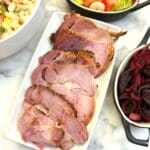
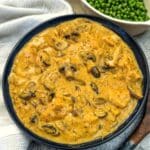

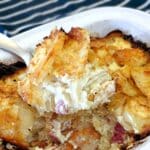
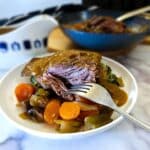
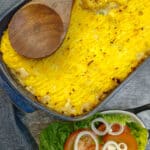
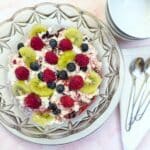
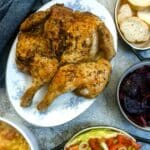
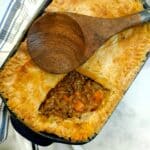
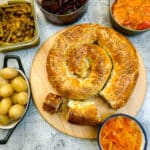

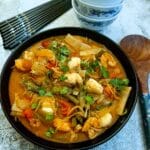
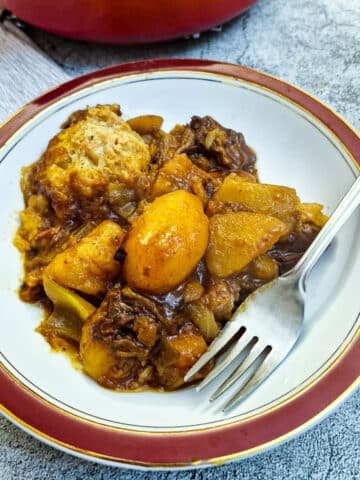
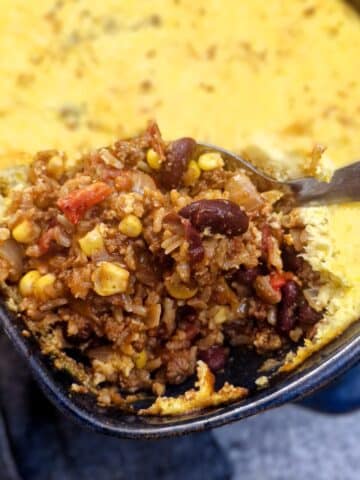
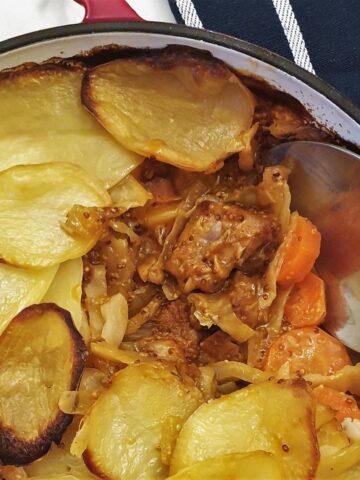
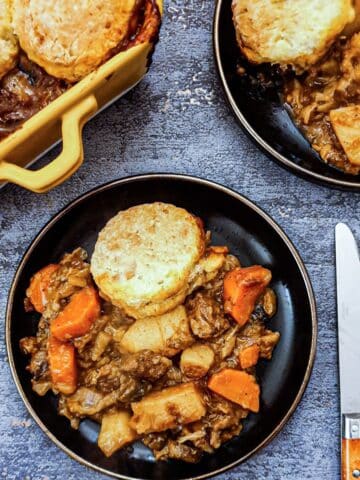
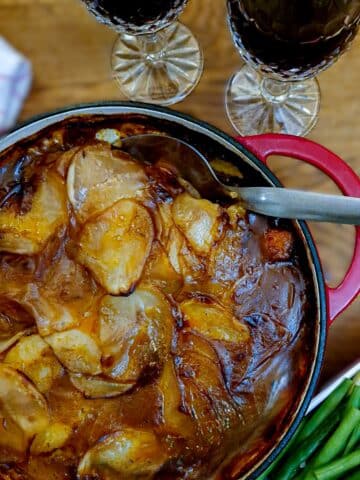
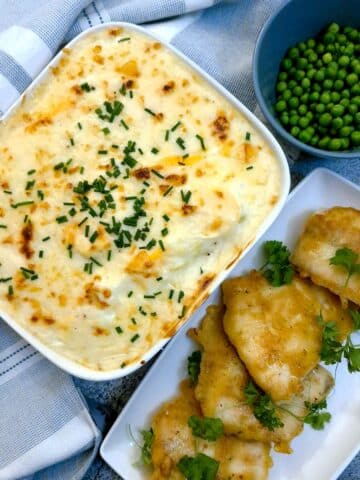
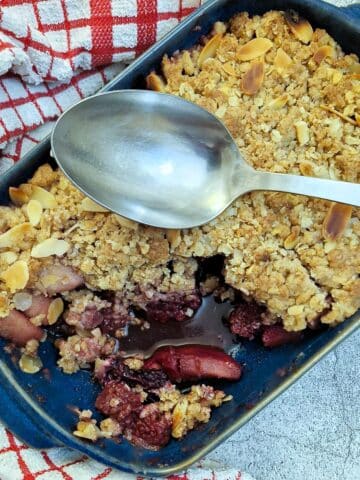

Renee
This was so yummy! Lovely and rich flavour. I topped up the pot with additional water until everything was almost covered, because 2 cups of stock didn’t cover everything, But I don’t think I’d do that next time as it made too much sauce and it wasn’t thick enough. Perhaps I should have pushed everything down into the liquid instead? Or else added some additional flour maybe? I used lightly salted lamb cuts with the bone in that are available at this time of year in my country to make a dish called fårikål, and they were delicious in this, Will definitely make this dish again soon. Thank you for all your lovely recipes. I enjoy your newsletters.
VJ
So pleased you enjoyed it Renee. Thank you for your comment!
Richard Seddon
I'm from an old Lancashire family. My great grandmother and my grandmother had a secret ingredient for their Lancashire Hotpot and other hotpots. The ingredient is a spoonful of Black Treacle. It adds a depth of flavour and sweetness very similar to the caramelisation you get when you brown meats before adding to a stew. I've shared this secret with several of the UK's top chefs who now use it.
VJ
Good idea - thanks for sharing. I'm going to try that next time I make a Lancashire hotpot!
Monica
I made this last night and used double the ingredients with the intention of freezing half. My husband enjoyed it so much he had 3 helpings! So no leftovers.
I used diced lamb instead of chops and added sliced carrots but it was a winner!!
VJ
Oh good, I'm so pleased you enjoyed it.